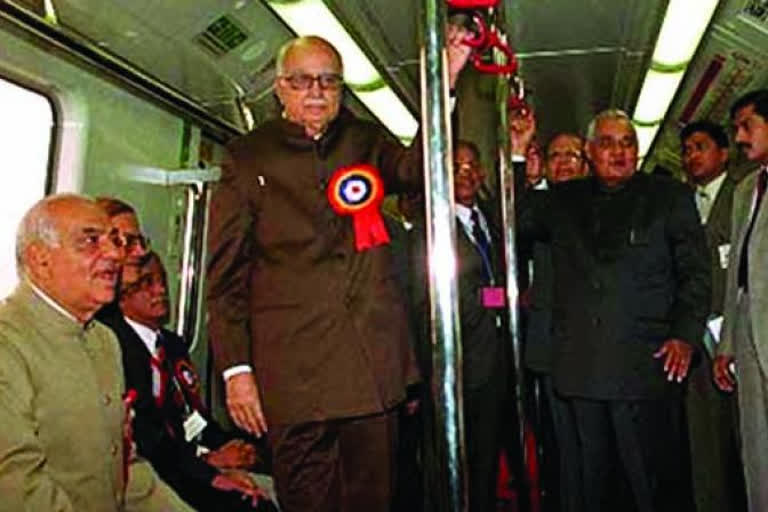New Delhi: About 20 years ago, Delhi Metro started its maiden journey when the then Prime Minister Atal Bihari Vajpayee flagged off the first train operation between Shahdara and Tis Hazari Court station. The Delhi Metro turned 20 on Saturday. After the inauguration of the first Metro service between Shahdara and Tis Hazari Court stations, there was no question of looking back. Delhi Metro has now become the lifeline of the national capital. The most efficient and safe mass transit transportation system, carrying more than 50 lakh passengers daily.
Read: Metro train slashes pollution, fuel consumption and boosts healthy environment: Report
Since then Delhi Metro's rail network has spread to every nook and corner of the national capital. When the Metro service was started in Delhi, it had only six stations and more than eight kilometres of the rail line. Today the strength of the Delhi Metro has gone up to 286 stations, transporting more than 50 lakh commuters daily.
Delhi Metro, which is entering its 21st year, has now added 390 kms to its network of rail lines. The wheels of the Delhi Metro train stopped for the first time during the Covid-19 pandemic. The Delhi Metro on average operates for 17 hours and helps millions of people commute to and from their destinations. Delhi Metro was stopped on March 22, 2020, due to the imposition of a lockdown in the country. But again it resumed its journey after a gap of 169 days.
Former Director of Delhi Metro Rail Corporation Mangu Singh said, "Delhi Metro turned 20 on Saturday. Delhi Metro Rail Corporation (DMRC) through innovation brought a big change in urban mobility. The DMRC always innovated and gained maturity while experimenting with new ideas and technology. Today Delhi Metro has a rail network of around 390 kilometres, a huge expansion compared to previous years. "We are now working on the fourth phase of Delhi Metro. It has 286 stations and a network of 11 categories of lines."



